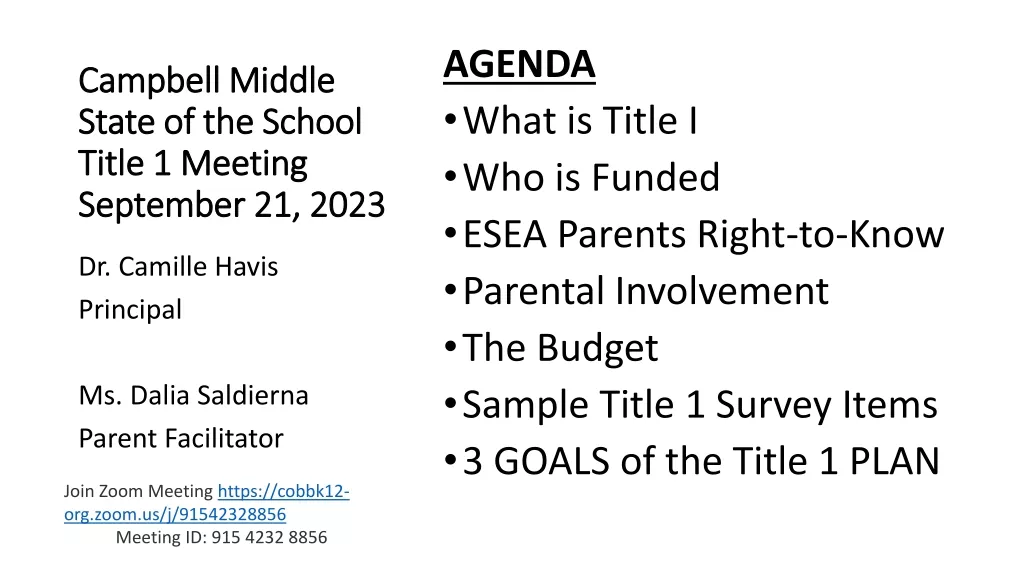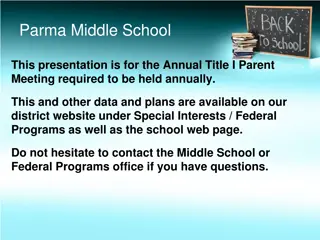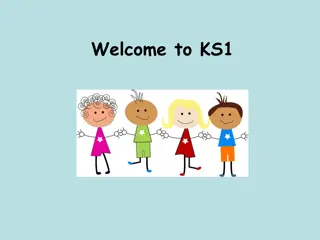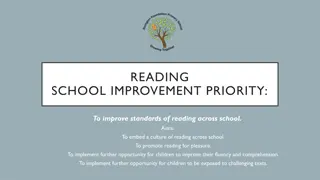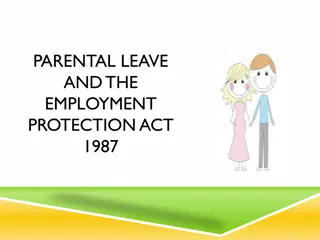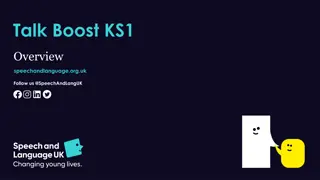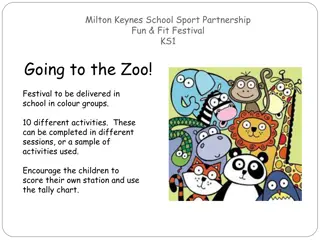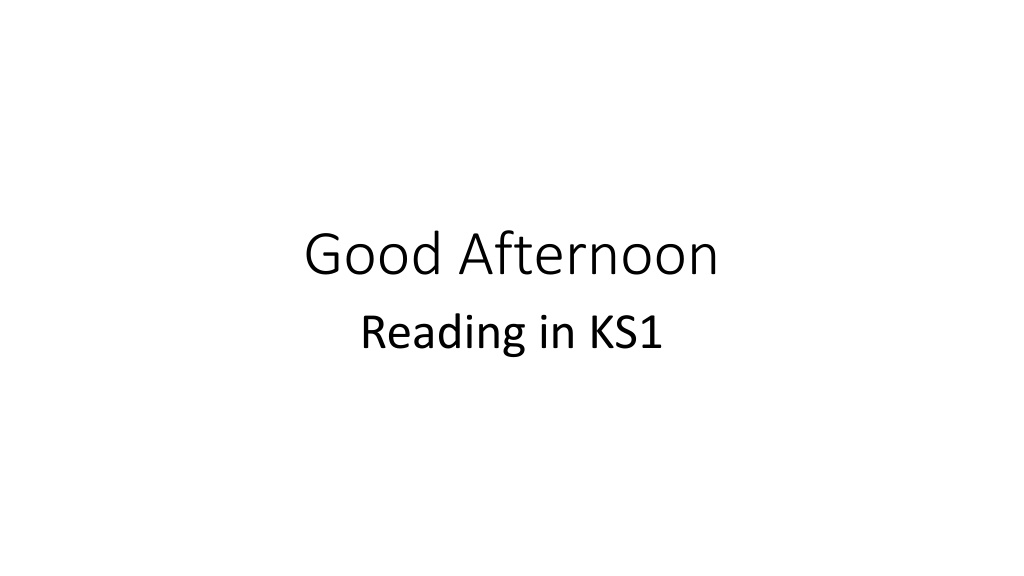
Helping Your Child Thrive in Reading through Repetition
Discover the importance of repetition in children's reading journey, how it deepens their understanding and emotional engagement with stories. Explore strategies like reading the same book multiple times and the benefits it brings to your child's development and joy in reading.
Download Presentation

Please find below an Image/Link to download the presentation.
The content on the website is provided AS IS for your information and personal use only. It may not be sold, licensed, or shared on other websites without obtaining consent from the author. If you encounter any issues during the download, it is possible that the publisher has removed the file from their server.
You are allowed to download the files provided on this website for personal or commercial use, subject to the condition that they are used lawfully. All files are the property of their respective owners.
The content on the website is provided AS IS for your information and personal use only. It may not be sold, licensed, or shared on other websites without obtaining consent from the author.
E N D
Presentation Transcript
Good Afternoon Reading in KS1
What books are in your child's bookbag and what are their purpose to help your child in their reading journey?
RWI Core Storybook The core Read Write Inc. Phonics storybooks are the best option for home reading: children read the story three times at school and read it again at home to build their confidence and fluency. Your child has a Storybook matched to the sounds and words they know a decodable book so they should be able to read all the words. Giving your child the feeling of success! Please avoid saying, This book is too easy for you! but instead say I love how well you can read this book! Children can work on prosody/expression and their comprehension skills that are enabled with fluent reading.
RWI Book Bag Book Read Write Inc. Phonics Book Bag Books help reinforce classroom learning with reading at home to accelerate reading progress. They are matched to your child's phonic knowledge. Book Bag books support children with additional reading practice outside the classroom. All Book Bag Books include notes for parents and carers on how to help their child at home with phonics Teachers read the Book Bag book to children first; so they are not sent home cold . They may give a challenge to your child, but it will be a manageable challenge.
Read the same book again and again Children love reading the same book again and again. Their reading becomes speedier and they understand what they are reading. Encourage your child to read words using Fred in your head (see glossary). Show your child how to read the story in a storyteller voice. Share your enjoyment of the story when they read it again and again.
Thriving on repetition It is not just the number of different stories children listen to that matters. On each rereading, their familiarity with a story deepens and, with that, comes a greater emotional engagement. Wolf quotes the writer Ann Fadiman when she reflects on what re-readings bring: the former [reading] had more velocity; the latter had more depth. When children ask for a story to be re-read, in effect they are asking for another chance to explore the language, the characters and their feelings, and to relive the emotions they felt on the first reading. They hear the same words read in the same way and gain a sense of comfort in knowing what follows. They wait for their favourite bits, ready to join in or ready to be scared, even when they already know what happens. Their attachment to the story equips them to retell it and, when they have learnt to read, encourages them to read it for themselves.
Sharing Books What do I do with the picture books? One of the most important things you can do as a parent at home is read to your child. Even when your child can read independently!! Reading Framework 2023Reading aloud fosters positive attitudes, enhances pupils motivation to read, and develops vocabulary and other knowledge, including of books, authors and genres that they might not choose to read for themselves. It also contributes indirectly to their fluency, as they listen to an accomplished reader bring a text to life. Reading books aloud will increase your child's vocabulary and love of books. Reader teacher Loving stories is important because children who love stories want to read stories for themselves. Children who read a lot become better readers. Please keep listening to your child read aloud even if it is just for a few pages and they continue to read to themselves afterwards. Reading Framework 2023 - Pupils who read regularly report heightened levels of social and emotional wellbeing. For many, reading is a form of relaxation, a place to escape everyday challenges, a source of entertainment. Reading allows readers to adopt new perspectives, develop empathy and become more socially conscious.
Special Friends, Fred Talk, read the word Remind your child to read words using Special Friends, Fred Talk, read the word . For example ship : spot the sh , then Fred Talk and blend to read the word e.g. sh, sh-i-p, ship. RWI terminology reminder! Red Words Red Words are also known as common exception or tricky words. They occur in stories regularly (said, what, where) but have unusual letter combinations ( ai in the word said makes the sound e ). Remind your child not to use Fred Talk to read Red Words but instead to stop and think . Tell them the word if you need to.
What books will your child come home with after they have completed RWI? Children will choose from a carefully selected age-appropriate books, chosen by their teacher.
Three things to do Ask your child to read the sounds and words before they read the story. They will enjoy teaching you to read these too. When your child reads the story, encourage them to read the word in Fred Talk if they hesitate or read it incorrectly. Praise them when they succeed. Read back each sentence or page to keep the plot moving - your child s energy is going into reading the words not the story. Listening to your child read Three things not to do Don t read the story to them first. Don t ask your child to guess a word by looking at the pictures. And, importantly, please try not to become irritable if your child ever struggles! Keep smiling! Find more free parent resources on www.ruthmiskin.com
Book Change Please trust your child's teacher to choose the book(s) that will help your child the most. RWI Book Bag Books will be changed on a Monday. RWI Core Story Books will be given out to your child once completed in class therefore no set day and books are on a rolling programme.
Home Reading Expectations A little every day Repetition is key to speedy reading long term memory Staff monitoring Reading Records speak to parents if necessary to establish barriers to reading
Talk Through Stories Year Ones New picture book weekly Texts chosen for their Tier 2 vocabulary Challenging, ambitious words which do not usually crop up in day to day conversation Vocabulary section 10 minutes daily Story activities character, plot, sentence rehearsal, inference 20 minutes daily
SeeSaw online home learning https://schools.ruthmiskin.com/training/view/P7pE9XDD/GpHjrYtb
Thank you Please make your way to your child's classroom

